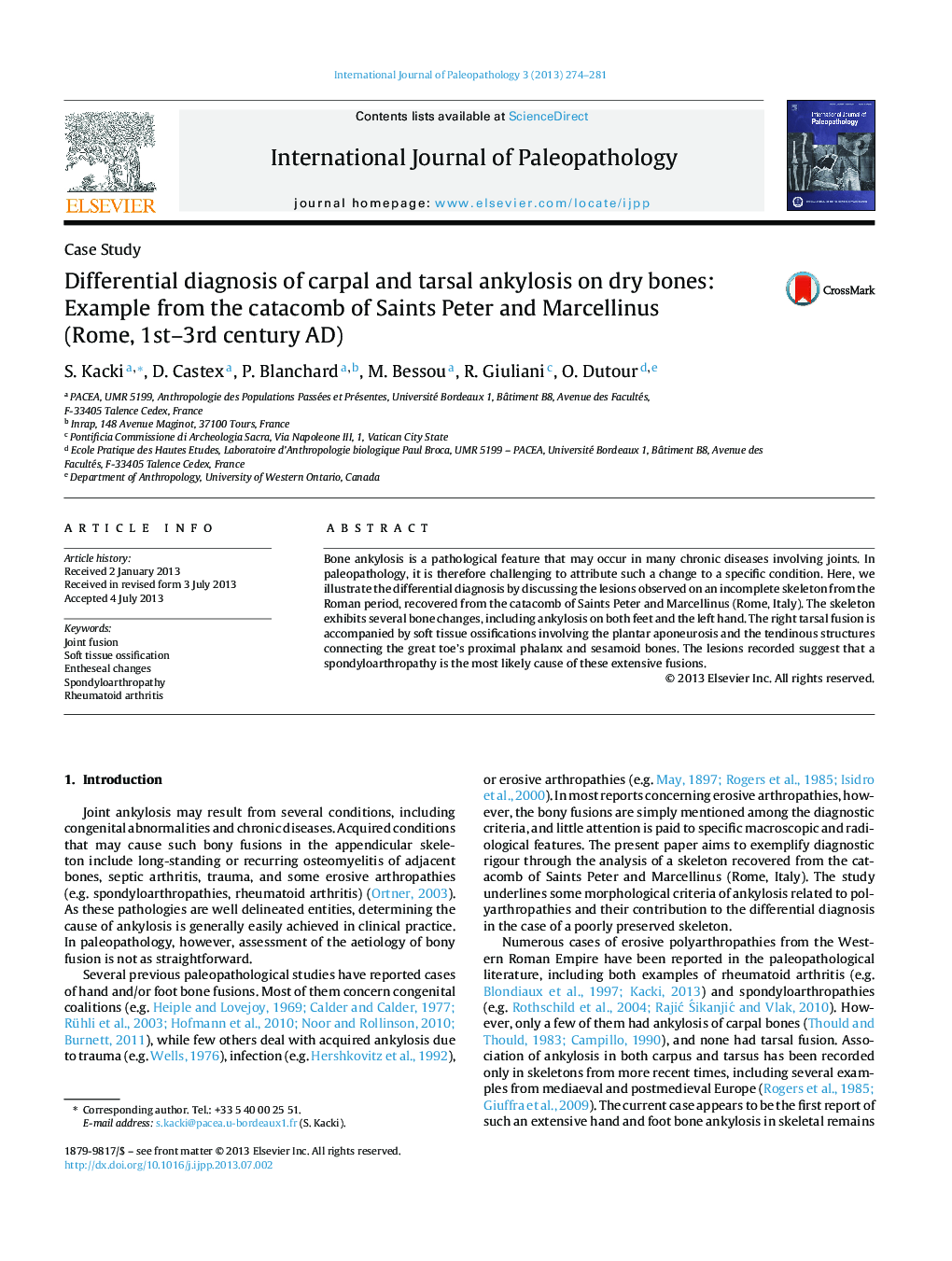| Article ID | Journal | Published Year | Pages | File Type |
|---|---|---|---|---|
| 101393 | International Journal of Paleopathology | 2013 | 8 Pages |
•A skeleton with ankylosis of carpal and tarsal bones is described.•The potential causes of such bone changes are discussed, with particular focus on rheumatoid arthritis and the spondyloarthropathies.•Key features of spondyloarthropathy-related ankylosis are provided.
Bone ankylosis is a pathological feature that may occur in many chronic diseases involving joints. In paleopathology, it is therefore challenging to attribute such a change to a specific condition. Here, we illustrate the differential diagnosis by discussing the lesions observed on an incomplete skeleton from the Roman period, recovered from the catacomb of Saints Peter and Marcellinus (Rome, Italy). The skeleton exhibits several bone changes, including ankylosis on both feet and the left hand. The right tarsal fusion is accompanied by soft tissue ossifications involving the plantar aponeurosis and the tendinous structures connecting the great toe's proximal phalanx and sesamoid bones. The lesions recorded suggest that a spondyloarthropathy is the most likely cause of these extensive fusions.
